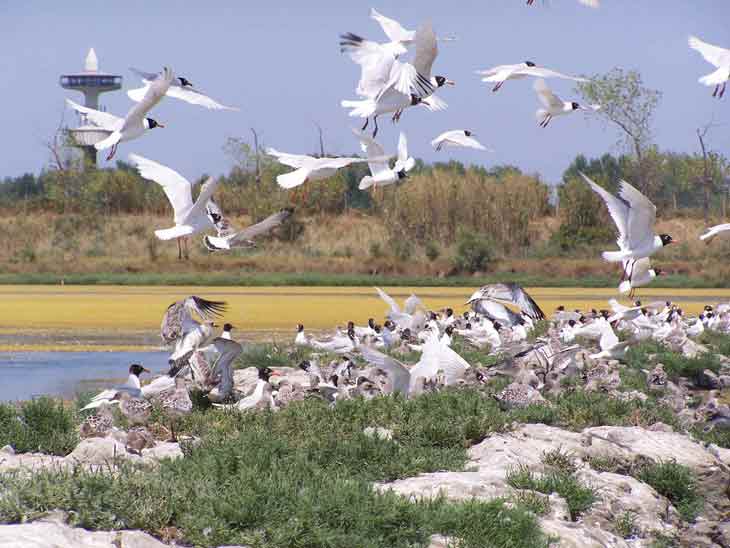Presentation of the results of the environmental monitoring for the onshore part of the Adriatic LNG pipeline

During a public meeting held in Accademia dei Concordi, Rovigo the results of the environmental assessment related to the animal and plant life around the onshore part of the gas pipeline are presented, including coastal and agricultural areas, lagoons and valleys. The monitoring was conducted by naturalistic Association Sagittaria on animal and plant life in the onshore part of the gas pipeline, including coastal and agricultural areas, lagoons and valleys.
The study confirmed that the works done to complete the pipeline didn’t have an environmental impact on surrounding areas. Good results were reached also for restoration jobs, done with the help by Adriatic LNG between Scanno Cavallari and Scolo Sadocca and between Scolo Sadocca and Cavarzere. These are naturalistic engineering and restoration works, aiming at reinforcing and re-vegetating embankments, and, generally, all the most fragile areas for the plant life, which were interested by the construction of the pipeline.
Angelo Zanellato, President of Consvipo, Danilo Trombin, Responsible for Resarch, Information and Environmental Education at Sagittaria Association, Carlo Mangia, Technical Manager of Adriatic LNG, Adriano Gambetta, Shore Base Manager of Adriatic LNG attended the event.
“The huge quantity of data released during several monitoring campaigns, strongly support the idea that no environmental impact on animal and plant life took place during the works to complete the pipeline and during the operating phase” says Danilo Trombin, Responsible for Resarch, Information and Environmental Education at Sagittaria Association.
“The safeguard of the eco-system surrounding the Terminal has been a priority in every aspect of the project. ” says Carlo Mangia, Technical Manager of Adriatic LNG – “The construction works, started in 2006 and completed in May 2009, have been scheduled in full respect of the movements of migratory birds, which rest in the Delta Po area. State-of-the-art technologies, like Horizontal Drilling, have been used to build the pipeline and temporary barriers have been installed to reduce noise and muddy waters. “
The wide monitoring plan by Sagittaria Association started in 2006 and finished in May 2011, analyzing both the design and construction phase of the pipeline, and the operating phase. The monitoring plan will go on for the next three years, while the final report on the plant life is going to be submitted to relevant Authorities .
The results of the studies show that local vegetal species experimented a sharp rise and from botanical qualitative data it’s understood that the area monitored is in good general conditions.
Data on animal life show the presence of several species of amphibians and reptiles. Sagittaria study shows how many species have been favoured from the presence of work to build the gas pipeline. No negative indications come from the presence of nesting birds. Some other important species, which are important to be preserved (ie.Circus Pygareus) or which showed a rises in some water-living species (like the Glareola and Recurvirostra Avosetta), are present.
The pipeline links the Adriatic LNG terminal onshore and then to the national grid.The gas, after being brought to its original status through the vaporizers of the structure, is sent to the pipeline and after 15 kilometres offshore, it goes for other 25 kilometres onshore to Cavarzere, in the province of Venice. From here, another pipeline, owned by Edison Stoccaggio, send the gas for other 84 kilometres up to the national grid hub, near Minerbio, in the province of Bologna, where the gas is sent to the final customer
